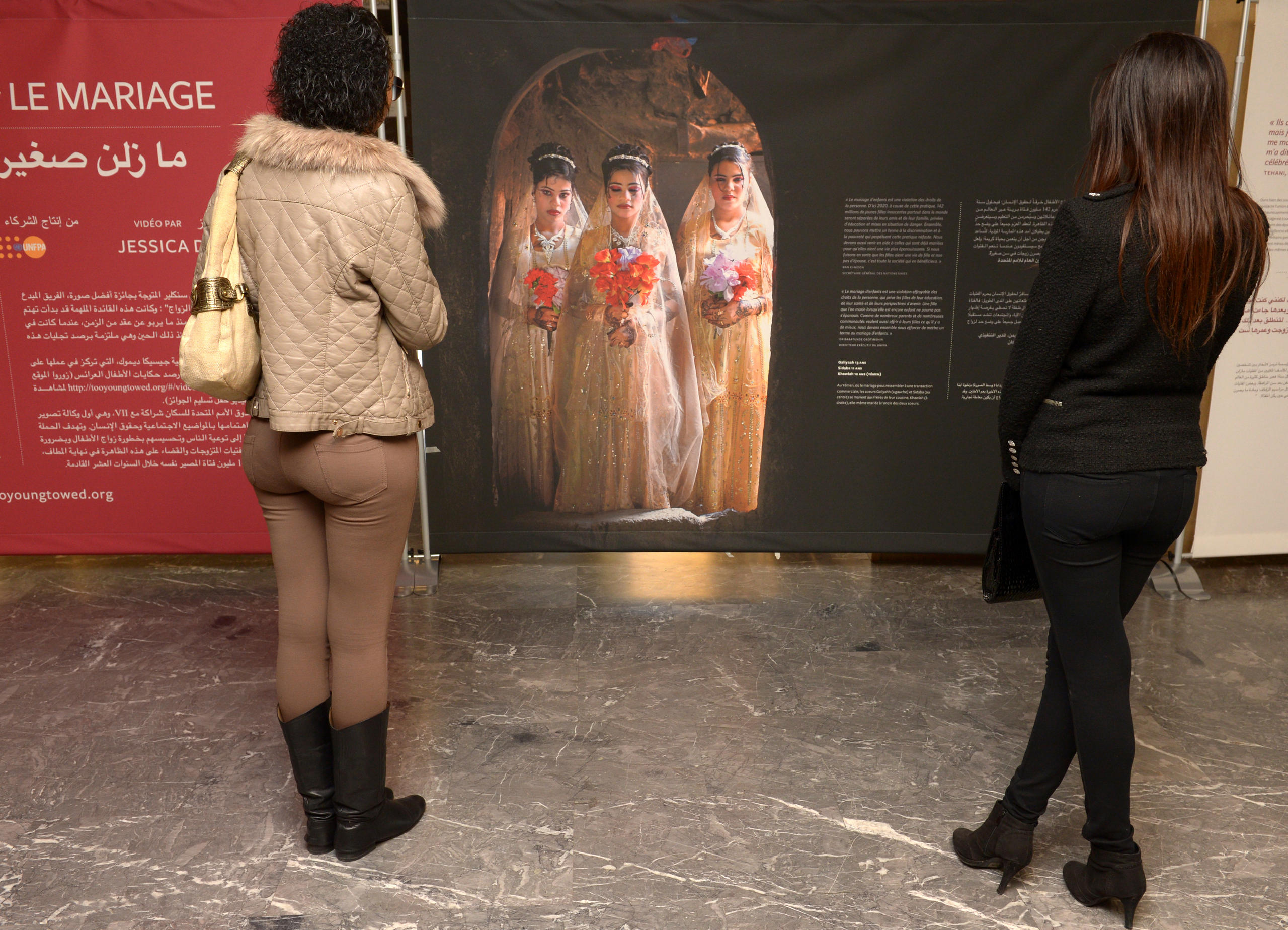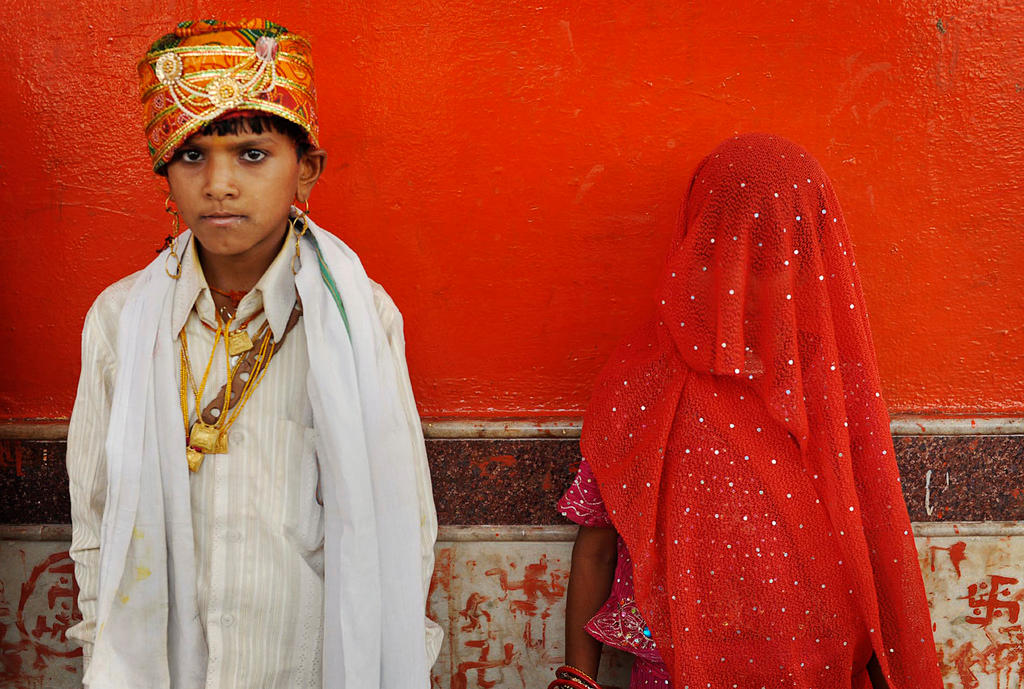What is being done about forced marriages?

When Jasmin D, a young woman of Tamil origin faced a forced marriage, she found support from the Bern city authorities. With requests for advice from underage victims in particular on the rise, the Bern approach could serve as a model.
The then 17-year-old refused to marry a man in India, and had a boyfriend, another Tamil, but he was from another caste. Her father threatened her, so she decided to leave the family, getting support from the Bern city authoritiesExternal link. His need to control her started after puberty. “It was a terror campaign without end. I didn’t know anymore who he was.”
Jasmin’s case is not unique in Switzerland. The Centre of Competence against Forced Marriage in SwitzerlandExternal link, a Swiss organisation working across the country to eliminate forced marriages, dealt with 1,702 forced marriages cases between 2005, when it began working, and the end of 2016.
Of particular concern is that 51 children under the age of 16 sought its advice last year. This compares with only five such reported cases in the decade between 2005 and 2015.
Anu Sivaganesan, head of the centre, said increased public awareness was one reason for the rise in those seeking advice. An important development: increased information work in schools, where the under 16s can easily be targeted.
But there was also a rise in terms of absolute numbers of those seeking advice about underage forced marriage.
“This may derive from increasing numbers of people arriving in the past few years from new migration countries, such as Syria, Afghanistan, Iraq, Eritrea, and Somalia. This means that most cases below 16 years are from the asylum field,” she told swissinfo.ch by email.
This is not the case for advice sought among its other cases of forced marriage. Here 91% of cases concern second and third generation migrants to Switzerland.
“Migration effect”
Sivaganesan said that the fact that many minor marriages happen among the newly arrived, such as asylum seekers, would at first glance imply that the problem is an “imported” one.
“But we have a lot of evidence that it is not just an impact of origin, but also a migration effect – meaning, that the new circumstances and the diaspora context may enhance a fall back to certain traditions, such as child and forced marriages,” she said.
Another factor is the increase of religious or ritual marriages, which allows the bypassing of minimum marriage age laws (18 in Switzerland). Sivaganesan points out that Swiss law does not permit any religious wedding ceremony before a civil wedding. But some officials are not aware of this, she added, citing the example of a counsellor for an unaccompanied minor asylum seeker who attended but did not intervene in a religious marriage ceremony.
Switzerland has banned forced marriages since 2013. By law, Swiss registrars must refuse to officiate in forced marriages and are required to report suspected incidents to judicial authorities.
The law is no “miracle cure” said Sivaganesan. Extra measures should be included to protect victims via sustainable strategies.
Bern, a case management model
A model of how to deal with forced marriages is the city of Bern, she says, which not only has a round table on forced marriages, in which private and public institutions work together, but also recognises that people need help after leaving the family home, to form long-term independence.
The Bern case management model is based on well-working cooperation between the Centre of Competence against Forced Marriage, which covers the whole country, and the local authorities, such as the Population Services (invaluable if for example a victim needs to move cantons).
This kind of collaboration and combination of services “is so far lacking in the rest of Switzerland,” Sivaganesan commented.
Susanne Rebsamen, who coordinates the Forced MarriagesExternal link project at Bern’s Integration Competency CentreExternal link, said that city institutions had responded well to efforts to raise awareness about forced marriages.
Message getting through
There are now around 20 institutions at the round table. Meeting annually, it assesses the situation in the field, and where improvements could be made, she said. There are clear processes for how cooperation should work (in the form of a flowchart).
For the more extreme cases, the city’s Population Services, Immigration and Alien PoliceExternal link department takes an active role, and can intervene within the context of the law. This could, for example, be helping a victim with a change of canton or identity, Rebsamen said.
The Bern city authorities – which coordinate but do not give advice themselves, this is left to other institutions – do not have any reliable statistics about the number of cases dealt with.
But “what we do know is that the centres working on a national level on forced marriages, including Anu Sivaganesan’s, have relatively high number of enquiries from Bern”. This shows that the message is getting through, said Rebsamen.
The government’s programme?
Coordination work is also being done at a federal level. However, the Swiss government’s initial five-year programme against forced marriagesExternal link, which started in mid-2013, will end in August 2017, as intended.
“The question of what happens next has not yet been decided. The intention is that the cabinet will look at a report on the topic during the course of the year,” Lukas Rieder, a spokesman from the State Secretariat for MigrationExternal link, told swissinfo.ch in email comments.
Feedback from the project and those in the field has shown that the government’s programme has – through financing, providing coordination and by putting the topic on the agenda – helped regions to either start projects or further develop existing measures, he said.
“In comparison with the situation before the government’s programme, in which there were only a few NGOs dealing with the issue and only a few regions with structures for dealing with the issue, a big step forward has been made.”
Rieder added that, in addition, there was a new objectivity in discussions around forced marriages, stemming from, among others, a lessening of prejudice and stereotyping.
Definitions
A forced marriage can mean being forced into a marriage you do not want or being forced to stay in a marriage that you did not want.
The Centre of Competence against Forced Marriage in SwitzerlandExternal link deals with men and women in these situations, the people close to them and with professionals. It offers counselling and its services are free. Helpline: +41 (0)21 540 00 00, email: info@zwangsheirat.ch
In terms of origin, a government report from 2012 found the main groups were from the Balkan region, Turkey and Sri Lanka. This is reflected in the centre’s own experience, although it reports a more diverse group of countries and ethnicities. For example, the Yazidis, the Roma, as well as the newer migration countries.

In compliance with the JTI standards
More: SWI swissinfo.ch certified by the Journalism Trust Initiative











You can find an overview of ongoing debates with our journalists here . Please join us!
If you want to start a conversation about a topic raised in this article or want to report factual errors, email us at english@swissinfo.ch.